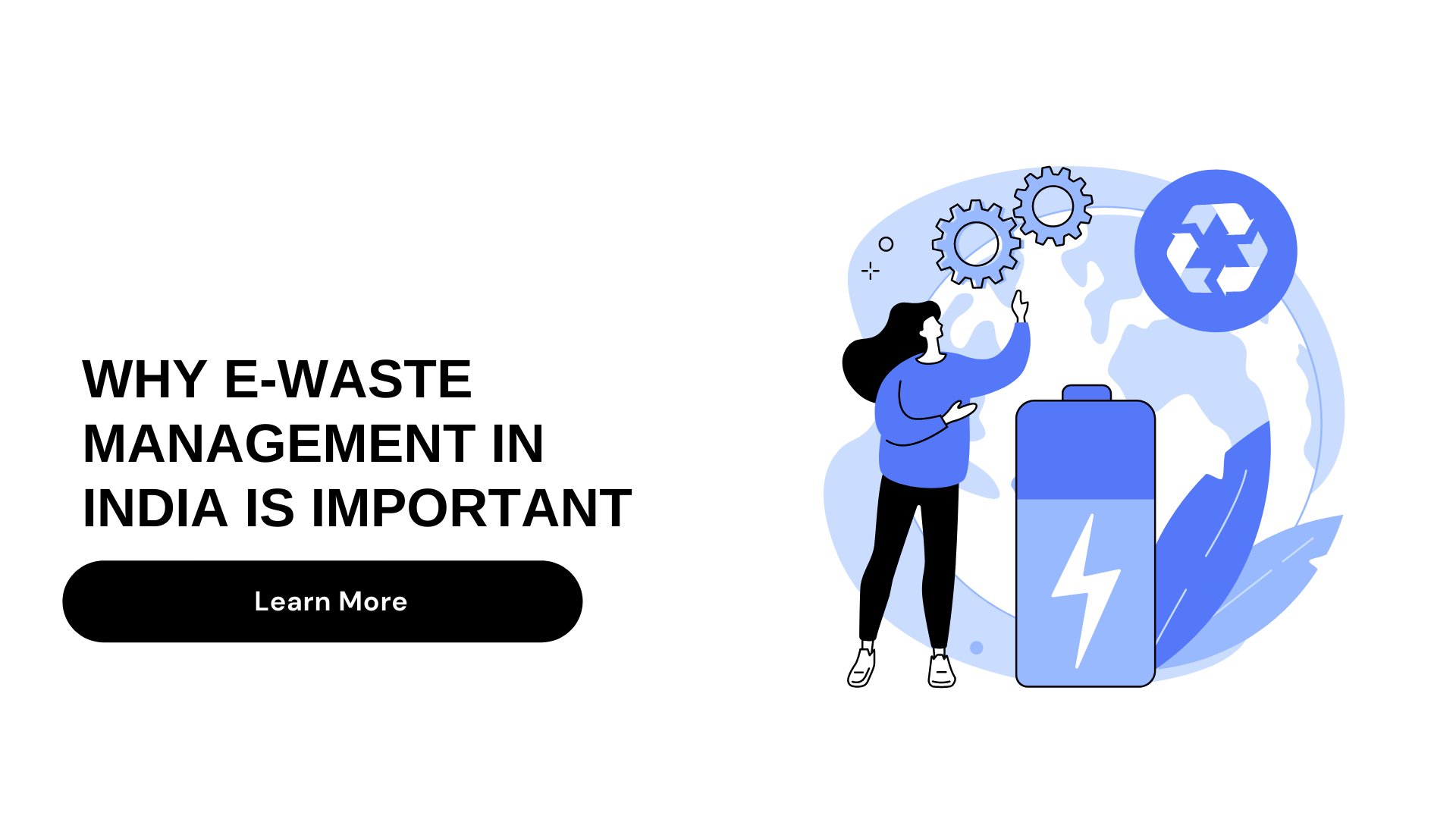E-waste is a rich source of metals including gold, silver, and copper, which can be recovered and reused in the manufacturing process. The efficient recovery of precious elements in e-waste has enormous economic potential and can create income-generating opportunities for both people and businesses.
The problem with e-waste
India and the world produce between 50 and 70 million tonnes of e-waste per year. Although this is a small fraction of the 50 million tonnes generated annually in the US, the United Kingdom, and Germany, it is large enough to pose a significant environmental challenge. The growing popularity of e-waste recycling is driven by consumers’ increasing preference for sustainable living and products that are manufactured responsibly. There is also an awareness that electronic devices – which have become a necessity in the modern world – can be broken down into their basic component parts, used, and then recycled to provide clean energy and to produce usable materials. India generates a significant amount of e-waste, particularly in its large cities.
Why India needs to take action now
We live in a world where technology is part of our everyday lives. In 2009, around 30 million tons of e-waste had been produced. By 2016, that number had risen to 50 million tons. This is going to keep going up as more and more people become connected to the internet, start using smartphones, and buy new gadgets. E-waste is one of the fastest-growing waste streams on Earth. And with countries like India being a major hotspot for e-waste, With an increase in demand for electronic products, the increase in production of these products is also causing an increase in the amount of e-waste being created. The Indian subcontinent has one of the fastest growth rates for e-waste. This means that India needs to take action to reduce its e-waste problem before it’s too late. It’s time to take some measures to prevent further pollution from happening.
Why is e-waste important?
E-waste consists of various electronic devices that have reached the end of their useful life. These devices can contain valuable metals and material components. Electronics are big consumer items, and E-waste comprises a number of consumer electronic products. An average Indian citizen owns more than 30 mobile phones. Electronic waste in India is increasing rapidly due to rapid urbanization, an ever-increasing population, technological developments, and increasing incomes. E-waste is a part of the organized, unorganized, and domestic sector in India. About 90% of e-waste in India is generated from the private sector (86% of e-waste is generated by private households in India). Through e-waste, you can earn and start a business.
How can e-waste be managed in India?
It’s difficult to estimate how much e-waste is generated in India. But according to a UN report, the country had an estimated 5 million gadgets on its roads in 2016 – a figure expected to double by 2020. With so many electrical goods being dumped in landfills or lost every year, improper management of e-waste can affect the health of our environment, agriculture, and the economy. Processes including open incineration and acid-leaching are used by e-waste recyclers. This issue could be rectified by raising awareness and strengthening recycling unit infrastructure, as well as existing policies. An unorganized sector manages the majority of the e-waste collected in India.
In order to improve e-waste management, five critical components must be linked together. These include:
- Providing market information on e-waste prices;
- Incentivizing formal e-waste recycling;
- Upskilling informal sector actors;
- Deploying easily available and mature recycling technologies; and
- Developing creative methods and technologies for processing new types of e-waste.
Conclusion
Effective e-waste management practices can lead to a reduction in energy consumption, thereby contributing to a low-carbon environment. Thereby, helping India achieve its national climate commitment under the Paris Agreement. The current federal e-waste management policy is guided by the Indian Environment Protection Act of 1986 and the Indian Electronic Waste Rules, 2000. As a result, private sector participation in the e-waste management sector is limited. A timely review of the policy will help ensure that it makes sense in the present context, and reflects India’s efforts to meet its climate commitments.

